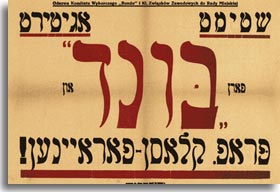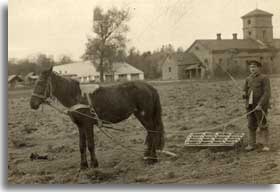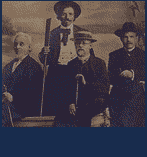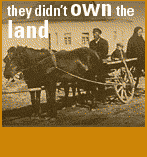

II. Political Changes after World War I
One of the first aftereffects of the First World War was the redrawing of the political map of Europe, something that was accomplished at the Peace Conference at Versailles, which opened on January 12, 1919. The large Central Power empires were broken up. The Austro-Hungarian Empire was completely dismantled and new countries, with substantial Jewish and other minorities, emerged in Eastern Europe. A part of this process was the framing of a Minorities Rights Treaty  (1919). The newly formed Eastern European states of Poland (over 3 million Jews), Romania (850,000 Jews), Czechoslovakia (375,000 Jews), Lithuania (115,000 Jews), Yugoslavia (68,000 Jews) and Bulgaria (48,000 Jews) were each obliged to adopt this policy which was intended to ensure the rights of ethnic minorities, including Jews, within their borders. It also involved granting citizenship to minority groups and allowing them to organize and to maintain a cultural identity including establishing their own schools and speaking their own languages, while still remaining a part of the newly formed political state in which they lived. Thus, Jews in Eastern Europe found themselves officially emancipated and enfranchised as citizens of the new postwar republics instead of Empires.
(1919). The newly formed Eastern European states of Poland (over 3 million Jews), Romania (850,000 Jews), Czechoslovakia (375,000 Jews), Lithuania (115,000 Jews), Yugoslavia (68,000 Jews) and Bulgaria (48,000 Jews) were each obliged to adopt this policy which was intended to ensure the rights of ethnic minorities, including Jews, within their borders. It also involved granting citizenship to minority groups and allowing them to organize and to maintain a cultural identity including establishing their own schools and speaking their own languages, while still remaining a part of the newly formed political state in which they lived. Thus, Jews in Eastern Europe found themselves officially emancipated and enfranchised as citizens of the new postwar republics instead of Empires.
However, many of the countries that signed the Minorities Rights Treaties, did so to gain the support of the United States, United Kingdom, and France. But soon these countries began ignoring parts of the treaty that were not to their liking. Economic discrimination against Jews was common. Quota systems limited Jewish entrance into higher education, and limits (or even barring of Jews) in certain professions became the norm in the new states. Part of the economic discrimination resulted from the fact that at the end of World War I, Eastern Europe, including most of the Jewish communities within that area, was in economic ruin. Many homes and means of livelihood had been completely destroyed during the war, and many people, as well as governments, believed that if they excluded Jews from the economy, there would be more opportunity for others.
The Minorities Rights Treaties guaranteed cultural autonomy to the Jewish community, and that they would be able to maintain their own ethnic schools which taught their religion, culture and languages. But the new states did not want to support Jewish cultural autonomy at the expense of native nationalist movements. Funding was eventually cut for Jewish communal administration and educational programs resulting in communities having to institute their own system of taxes to support them, effectively creating a double tax on Jewish citizens. The Jews of Eastern Europe thus became heavily dependant on support from American Jewish relief organizations, such as the American Jewish Joint Distribution Committee  , which supported soup kitchens, job retraining and other programs.
, which supported soup kitchens, job retraining and other programs.
III. Post-World War I: The End of the Russian Empire and the Beginning of the Soviet Union
The Russian Empire which had been at war since August 1914, collapsed in 1917. The Bolsheviks came to power in November 1917 and the Tsarist family was later executed. In the newly formed Union of Soviet Socialist Republics (USSR), the Jews were finally offered political and economic emancipation, and anti-Semitism was officially banned. The 2.8 million Jews of the USSR were declared equal citizens, and freed of restrictions on education, occupations and residential opportunities. Jews were recognized as a national, culturally autonomous group. There even was a Jewish branch of the Communist party, called Yevsektsiia. Yet, there were some indications that the Jews were not truly autonomous. They were free to use Yiddish, but Hebrew was banned as a bourgeois language. Conversely, Jews were allowed to create their own schools including a Jewish University.
Although the new Soviet state initially was willing to support secular Jewish activities and use of the Yiddish language, it was opposed to all organized religions. The Soviet authorities suppressed all religions, closing houses of prayer including churches, synagogues and mosques. The government closed religious schools and banned the printing of religious books. All non-socialist Jewish organizations, including the Zionists, came under attack. Jewish communal organizations were forced to disband. Religious Jews were persecuted, and considered enemies of the State.
Members of the middle class, including middle class Jews, were also persecuted in the Soviet Union. A large number of Jews had been involved in commerce prior to the Revolution and, as such, found themselves generally outside the new Soviet economic system. Then the Soviet regime offered the Jews land in the Crimea, Belorussia, and Ukraine on which to build farming communities. With equipment provided by the American Jewish Joint Distribution Committee, many Jews settled into these agricultural communities despite the hardships. In 1929, Jews were even offered Birobidzhan as their own autonomous region in Siberia. These settlements eventually failed.
After Joseph Stalin's rise to power, the cultural concessions granted the Jews by the central were withdrawn. The Yevsektsiia was abolished; Jewish cultural institutions were closed and the leadership killed or imprisoned; and Jews who had been Communists loyal to the government were systematically purged.
















